- Home
- Conn Iggulden
The Dangerous Book of Heroes Page 3
The Dangerous Book of Heroes Read online
Page 3
Yet Clinton’s new tactics were really an admission of defeat. For as long as Washington refused any pitched battle, it was a war Britain couldn’t win. A patriot army merely had to exist, somewhere, for ultimate victory. Supported by a French army in 1780, Washington had positioned himself at Brunswick so that Clinton’s army could not move from New York without his knowledge or hindrance.
Cornwallis, meanwhile, campaigned through Georgia and North and South Carolina, winning engagements at Savannah, Charleston, and Camden before entering Virginia in 1781. Yet he had no more control over those colonies than he had had two years before; the patriot forces had simply withdrawn to reappear elsewhere. By then, the passions of the war had increased. The Loyalist colonials were desperate in their desire to engage the patriots in the open, while the patriot colonials were vindictive in their raids on Loyalist settlements. For every Loyalist Guilford Courthouse bloodletting there was a vicious patriot Kings Mountain.
In addition—for Britain but not the patriots—this 1755–83 American war had also spread overseas. Britain found itself fighting, sometimes separately and sometimes together, the Dutch, French, and Spanish, and an armed neutrality of Russia, Denmark, and Sweden. As far afield as the North Atlantic, the Caribbean, India, and the Mediterranean, British territories were attacked as its European enemies attempted to take advantage of the American rebellion. Included in this conflict was a four-year siege of Gibraltar, from 1779 to 1783.
It’s no wonder the British resolve to fight other Britons, never strong, had wavered significantly. By the beginning of 1781, the American war was incredibly unpopular in Britain. Washington had hung on to his ragged and underpaid army in an uneasy alliance with the French. He believed that just one significant victory or British surrender would win him the war—not in the field but in Parliament itself.
Most Native American nations had remained Loyalist, although there was no specific coordination with the British army. Constant colonial breaches of the 1763 proclamation and various colonial attacks and massacres had made them firmly opposed to the patriots. The worst of the massacres was by the Paxton Boys in, of all colonies, Pennsylvania. Irish-Scots frontiersmen from Paxton had murdered twenty Christian Native Americans at Conestoga village. They then broke into Lancaster jail, butchered 14 in protective custody, threatened 140 more sheltering on Province Island, and finally marched on Philadelphia to murder the “Indian-lover” Quakers. Ben Franklin negotiated their dispersal, but none was prosecuted.
The Delaware nation was one of the few to sign a treaty of military support with Washington. At Fort Pitt in 1778 the Delaware were given the right to send representatives to Congress, although Congress never honored the terms. In retaliation to Iroquois attacks against the patriots, however, Washington ordered that they be not “merely overrun but destroyed.” In late 1779, General Sullivan carried out a scorched-earth policy in present-day Upstate New York. His men cut down crops and orchards, destroyed more than forty towns, and burned five hundred dwellings and a million bushels of corn. Colonel Brodhead murdered many women and children. As a result the Iroquois called Washington conotocarius—“town destroyer”—still their name for the president today.
In Virginia in 1781, faced by two armies trained by Prussian general Baron von Steuben, Cornwallis withdrew his seven thousand men to the deepwater port of Yorktown. He expected supplies and support by sea from General Clinton in New York, and hoped then to draw the patriot forces into battle. On the peninsula before the city, the Chesapeake Bay on two sides preventing escape, he would defeat them in a traditional battle.
With the main Royal Navy fleet in New York and other vessels farther north, there was only one frigate, one sloop, and some transports stationed at Yorktown. French admiral Comte Grasse therefore risked sailing north in support. Washington saw a chance and marched his army south from Brunswick, not to do battle with Cornwallis but to besiege him. Steuben and Lafayette blocked the neck of the peninsula with local militia while Grasse ferried Washington’s army across Chesapeake Bay. With his twenty-four ships of the line he then blockaded the bay, where he was joined by a second French squadron and more French soldiers. At that crucial moment in history, the Royal Navy had temporarily lost control of Chesapeake Bay, while the main British army remained in New York.
Cornwallis was in dire trouble. Even then, with prompt action that September, he could have attacked and defeated Lafayette’s six thousand French soldiers and then advanced out of the peninsula, but he hesitated. In New York, Clinton believed Washington’s march south was a feint in order to take New York, and he also delayed. It was poor leadership.
Isolated, fever-stricken, running out of food, and by then vastly outnumbered, Cornwallis surrendered his small army to George Washington on October 19, 1781. That same day, Clinton finally ordered the main army and navy to move south to support Cornwallis. It was too late. There were further skirmishes in 1782, but the war was effectively over that spring when the British government withdrew its support and funding for the war. As Washington had told Congress, he would win the war not on the battlefield but in Parliament. There never was any fundamental British interest in fighting the war; there was not even a coordinated military strategy. The French army, the force against which the British army might have fought a regular battle, was never once engaged.
In France, meanwhile, plans had been hatched by the French and Spanish monarchies—yet again—to invade democratic Britain. Two French divisions totaling forty thousand soldiers and sixty-six French and Spanish ships had gathered to cross the English Channel, with possible American support negotiated by Benjamin Franklin. Opposing them were thirty-eight vessels of the Royal Navy’s Channel Fleet. It would have been a close battle, but poor weather and sickness delayed the invasion attempt. By then, the navy had returned from North America and the opportunity had gone.
Separate peace with Britain was signed on November 30, 1782. The international treaty—recognizing the independent nation of the United States of America, the boundaries of the thirteen states, British Canada, and access to the Grand Banks fishing grounds—was completed in September 1783.
Many of the former slaves who’d fought for Britain fled to the Canadian colonies of Nova Scotia and Newfoundland and to Britain. Eleven hundred of these black Nova Scotians later helped establish Freetown in Sierra Leone. Those who couldn’t escape the new United States were returned to slavery.
The majority of Loyalists were dispossessed of their property. Some of the eighty thousand who left the United States found various positions and opportunities in Britain or in other British colonies, particularly Canada. One such Loyalist was James Matra of New York. He had sailed as midshipman with Captain James Cook in his first great voyage of discovery. After American independence, he became an enthusiastic supporter of the eventual British settlement of Australia in 1788. A suburb of Sydney, Australia, is named for him.
Another was Ben Franklin’s son William, the last governor of New Jersey Colony. He remained steadfastly loyal to Britain, and his father cut him from his will and his life. William, too, left the United States. Civil wars are the bitterest of all.
During the long war, Washington had managed to keep the fragile colonial alliances together and maintain the Continental army in the field. In March 1783 there was mutiny. Claims for large arrears of pay—supported by Washington—and arguments about the future leadership of the federated thirteen states led to the Newburgh mutiny. Some wanted Washington to be crowned king. During his rejection speech, Washington stopped to put on spectacles. He glanced at the assembled officers and said: “Gentlemen, I have grown gray in your service, and now I am going blind.” It was the end of the mutiny. The Continental army was disbanded in November, leaving a small standing force of artillery, while the last British forces left New York in December. Washington resigned his commission at Annapolis and returned to Mount Vernon.
Except for the one brief visit it was the first time he’d been home since 1775. He’d
taken this step before, of course, after his first unsuccessful military endeavors and after his successful defense of Virginia Colony. At fifty-one years of age, he was tired, but it was also a canny political move. There were the usual complaints, jealousies, rivalries, retributions, and vendettas that follow every civil war. There was a postwar economic depression, and the new federation of states was bankrupt, with no way to collect revenue to pay its debts. The loose union created by Franklin’s Articles of Confederation gradually began to break apart.
At Mount Vernon, Washington was well out of such petty politics. He was also in debt again. For three years he reorganized Mount Vernon and its crops. He made only the one trip away, to view his western lands and the new land near the Ohio River given him by Congress for his services.
By 1787, however, the states had decided an actual constitution was necessary to replace the defunct federation. The Virginia assembly unanimously elected Washington to lead its delegation, and at Philadelphia he was unanimously elected by the delegates to chair the Constitutional Convention itself. It lasted four months. The resulting constitution leaned heavily upon the Magna Carta of 1215, Britain’s Declaration of Rights of 1689, and John Locke’s Two Treatises on Government of 1690.
Washington actually made few contributions in the debating chamber, reputedly breaking silence only once. Yet by the time the Constitution was ratified by each state assembly in 1788, he had become the automatic choice for first president. Of his popularity, he said: “I feel very much like a man who is condemned to death does, when the time of his execution draws near.”
Ratification itself was not easy: in Washington’s state of Virginia it passed by just ten votes. It’s argued that the seeds for the next civil war of 1861 were actually sown in the Constitution, in its contradictions between ideals and application. Despite every person being a “freeman,” slavery was accepted, although the words slave and slavery were carefully not used. Further, although no slave had a vote, each slave counted as three-fifths toward another vote for their freeman “owner.”
It was Washington who summed up the realities facing the states. He wrote that the Constitution “or dis-union, is before us to chuse from.” Without its unifying force, the thirteen states would have parted company and France, for one, would have stepped in and snapped up some of them. As it is, there was a threatened French invasion in 1798.
Although there were other choices for the first president, including John Adams and Thomas Jefferson, once again it seemed inevitable that Washington would be chosen. In the first presidential election—by an electoral college, not the people—Washington received every primary vote. He took office on April 30, 1789, his wife joining him in New York.
That first presidency concentrated on internal affairs. Washington was determined to bind the states together, to create a stable mechanism of government and establish future presidential and congressional practices. He set the precedents for the presidency and government that exist today. Washington also visited every state, traveling in a white coach-and-four, with footmen in attendance and his stallion trotting behind.
During the first presidency there were no political parties at all, only men with different opinions. Of no political faction himself, Washington attempted to keep it that way. He selected a balanced, nonpartisan cabinet: Alexander Hamilton was appointed secretary of the treasury, Thomas Jefferson secretary of state, Henry Knox secretary of war, and Edmund Randolph attorney general.
Hamilton, a pragmatist from the West Indian colonies, introduced several controversial monetary policies. In particular, the federal assumption of state debts, the creation of the Bank of the United States, and, ironically, excise taxes, the spark that had set off the revolution. There were demonstrations and riots against the new taxes, too, and Washington was forced to call on the state militias to calm parts of the country. Hamilton and Jefferson were often in opposition, with the president smoothing the crises.
Washington’s second presidential term was dominated by foreign affairs. Despite his publicly stated intention to retire to Mount Vernon, he was unanimously reelected in 1792.
The bloody excesses of the French Revolution, begun in 1789, had horrified Washington. Only days after his second inauguration, without provocation, revolutionary France had declared war on Britain and a host of European countries. The treaty made between monarchist France and America during the Revolutionary War still existed, but Washington had no intention of aligning the United States with this new France and its horrors. The Federalist Hamilton supported the president, but Jefferson was strongly pro-France—or rather, anti-British—and his democrats wanted the United States to support France militarily.
Meanwhile, the French revolutionary ambassador, Edmond Genet, traveled the country to establish French fund-raising societies. He whipped up support for the United States to declare war on Britain, recruited American volunteers to fight for France, and issued French letters of marque for armed American ships to attack other countries’ cargo vessels. He received no support from the neutral George Washington and so threatened to “appeal from the president to the people.” This amounted to foreign interference in American domestic politics.
When Genet overruled the president’s order that a French-financed private warship remain in Philadelphia, Washington demanded his recall. In reality, the president kicked the French ambassador out of America. Suddenly, Genet changed his tune and begged to be allowed to stay. Yet another revolutionary mob had assumed power in France, and Genet himself was now in danger of the guillotine. He sought, and was given, the first political asylum in the United States.
Washington wrote: “I want an American character, that the powers of Europe may be convinced that we act for ourselves, and not for others.” He adopted a policy of strict neutrality in regard to the new French wars, alienating Jefferson in the process. Jefferson resigned at the end of 1793 and formed the Democratic-Republican Party.
The first invasion and war with Native American nations also began in Washington’s second presidency. The 1785 and 1786 treaties forced on the northwest Native Americans by the federation of states had caused huge resentment; three thousand people died in the subsequent fighting. After a major U.S. defeat in present-day Ohio, the decisive 1794 battle at Fallen Timbers (near Toledo) imposed temporary peace along the border.
In order to promote trade, finalize borders, and conclude various outstanding matters, the president sent Chief Justice John Jay to Britain to negotiate a treaty of commerce. It was the first major U.S. international trade negotiation. The Jay Treaty was signed in 1794 but provoked bitter criticism from pro-French congressmen. Washington was accused of negotiating an abject surrender, and Congress demanded the details. In fact, the treaty was a major success.
Through the Jay Treaty, Britain withdrew its trading posts from the Ohio country, the U.S.-British northern borders were confirmed mostly in U.S. favor, prewar debts were written off, trade was established between the United States and British West Indian colonies, the United States was given a “most favored nation” status in British trade, and the exports of both countries increased. What Britain would not agree to was a demand for compensation for freeing the slaves of its former colonies, withdrawing the right to impose a military trade embargo against its enemies (at that time France, in two later world wars Germany), and stopping impressment of seamen into the Royal Navy.
Britain was leading a twenty-two-year world war against militarist France and refused to have its hands tied in such a way. By 1796, it was the French who harassed U.S. ships and threatened sanctions. Eventually gunfire was exchanged, and in 1798 there was almost war. As a result, Washington realized that the United States needed her own warships and commissioned the first. One of them, USS Constitution, was built from captured British frigate plans.
Following the success of the Jay Treaty, Washington sent his ambassadors to Spain to negotiate another treaty. The Treaty of San Lorenzo gained U.S. access to Spanish Mississippi and to th
e Spanish port of New Orleans. Yet the political maneuverings of Congress, the virulent attacks by Jefferson’s supporters, and the public criticism of the excise tax had exhausted Washington. His sight and hearing had deteriorated further, and he refused to run for a third presidential term.
The farewell address he gave on September 19, 1796, is reread every year in the Senate. In three specifics Washington spoke against “the baneful effects of the Spirit of [political] Party,” endorsed a foreign policy of independence but not isolation, and proposed that “the very idea of the power and the right of the people to establish government pre-supposes the duty of every individual to obey the established government.”
Once more, George Washington returned to Mount Vernon and farming. Apart from a brief period in 1798, when he was commissioned commander in chief of a new army raised to resist the potential French invasion, he remained at home until his death.
Copyright © 2009 by Matt Haley
In the winter of 1799, he came down with a fever and throat infection after riding. He died on the evening of December 14, in some pain. He said, “I die hard but I am not afraid to go.” He is buried at Mount Vernon.
George Washington was born to an era of great and visionary men—Cook, Franklin, Burke, Nelson, Wilberforce, Jefferson, Wellington—but he stands with them equally. When the news of his death reached Britain, his former protagonist, the Royal Navy, fired a salute to him of twenty guns—just one less than for the monarch.
At the time of his death, Americans considered George Washington cold and indomitable, a steadfast man of war rather than of peace. Yet the modern republic he helped found, in those first precarious and unstable years of peace, has lasted longer than any other republic in the world. The shadow of his spirit crosses the centuries to the present day.

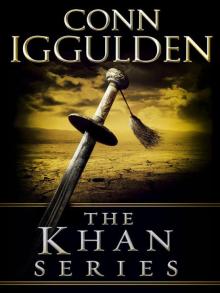 The Khan Series 5-Book Bundle
The Khan Series 5-Book Bundle Tollins 2: Dynamite Tales
Tollins 2: Dynamite Tales Tollins: Explosive Tales for Children
Tollins: Explosive Tales for Children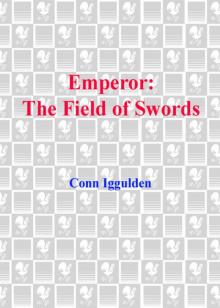 The Field of Swords
The Field of Swords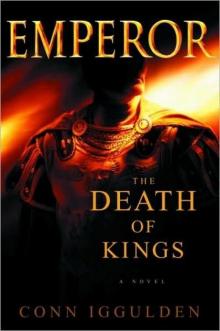 The Death of Kings
The Death of Kings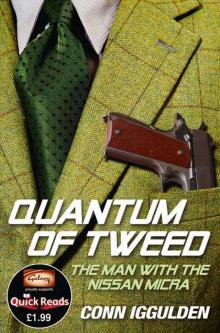 Quantum of Tweed: The Man With the Nissan Micra
Quantum of Tweed: The Man With the Nissan Micra Bones of the Hills
Bones of the Hills Genghis: Birth of an Empire
Genghis: Birth of an Empire The Gates of Rome
The Gates of Rome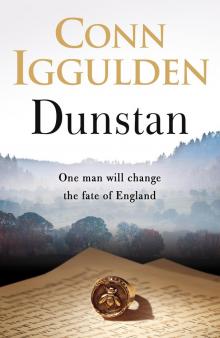 Dunstan
Dunstan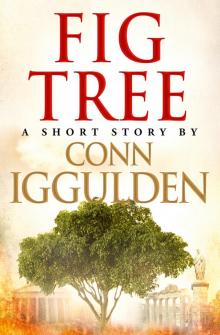 Fig Tree
Fig Tree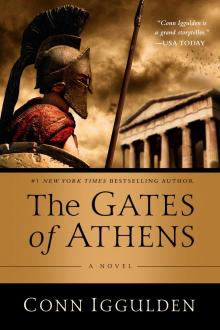 The Gates of Athens
The Gates of Athens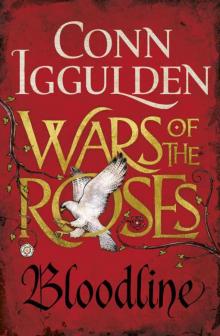 Stormbird
Stormbird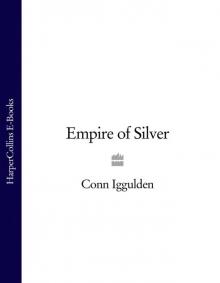 Khan: Empire of Silver
Khan: Empire of Silver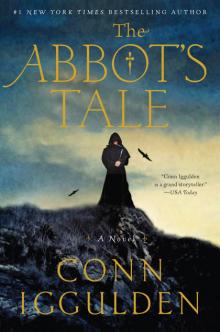 The Abbot's Tale
The Abbot's Tale Gengis: Lords of the Bow
Gengis: Lords of the Bow The Gods of War
The Gods of War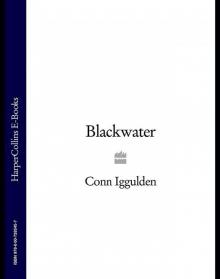 Blackwater
Blackwater Ravenspur: Rise of the Tudors
Ravenspur: Rise of the Tudors Wars of the Roses: Trinity (War of the Roses Book 2)
Wars of the Roses: Trinity (War of the Roses Book 2)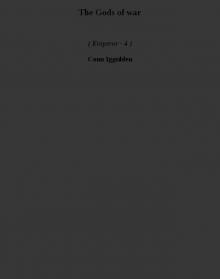 The Gods of war e-4
The Gods of war e-4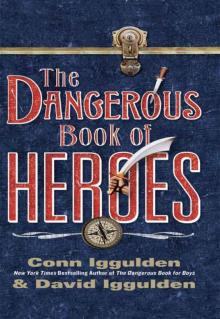 The Dangerous Book of Heroes
The Dangerous Book of Heroes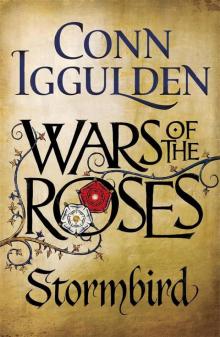 Stormbird wotr-1
Stormbird wotr-1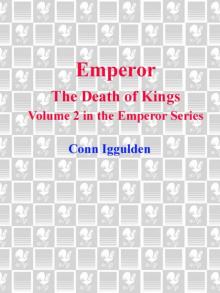 Emperor: The Death of Kings
Emperor: The Death of Kings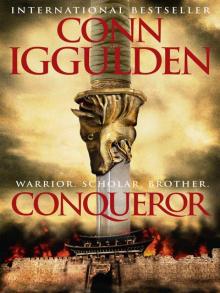 Conqueror (2011) c-5
Conqueror (2011) c-5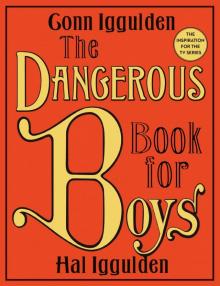 The Dangerous Book for Boys
The Dangerous Book for Boys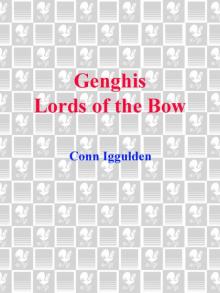 Genghis Lords of the Bow
Genghis Lords of the Bow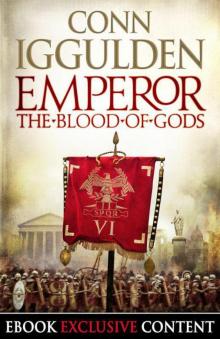 Emperor: The Blood of Gods (Special Edition) (Emperor Series, Book 5)
Emperor: The Blood of Gods (Special Edition) (Emperor Series, Book 5)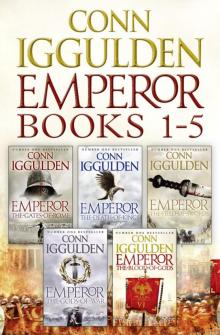 The Emperor Series: Books 1-5
The Emperor Series: Books 1-5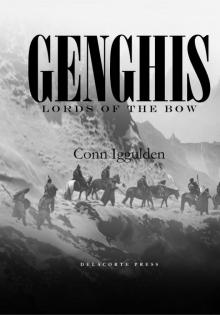 Lords of the Bow c-2
Lords of the Bow c-2 Lords of the Bow
Lords of the Bow Quantum of Tweed
Quantum of Tweed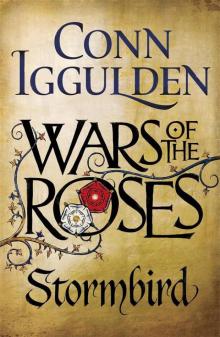 Wars of the Roses 01 - Stormbird
Wars of the Roses 01 - Stormbird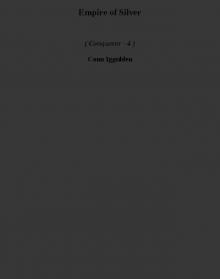 Empire of Silver c-4
Empire of Silver c-4 Birth of an Empire
Birth of an Empire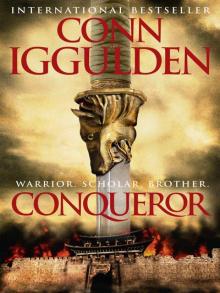 Conqueror (2011)
Conqueror (2011)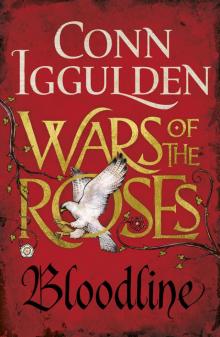 Wars of the Roses: Bloodline: Book 3 (The Wars of the Roses)
Wars of the Roses: Bloodline: Book 3 (The Wars of the Roses) Bones Of the Hills c-3
Bones Of the Hills c-3 Empire of Silver
Empire of Silver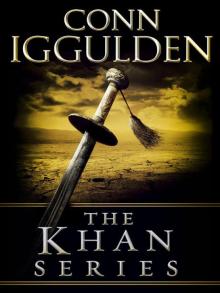 The Khan Series 5-Book Bundle: Genghis: Birth of an Empire, Genghis: Bones of the Hills, Genghis: Lords of the Bow, Khan: Empire of Silver, Conqueror
The Khan Series 5-Book Bundle: Genghis: Birth of an Empire, Genghis: Bones of the Hills, Genghis: Lords of the Bow, Khan: Empire of Silver, Conqueror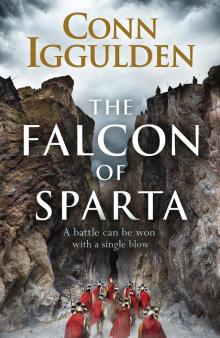 The Falcon of Sparta
The Falcon of Sparta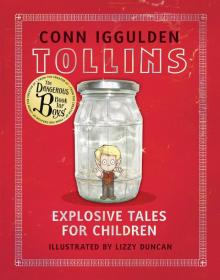 Explosive Tales for Children
Explosive Tales for Children